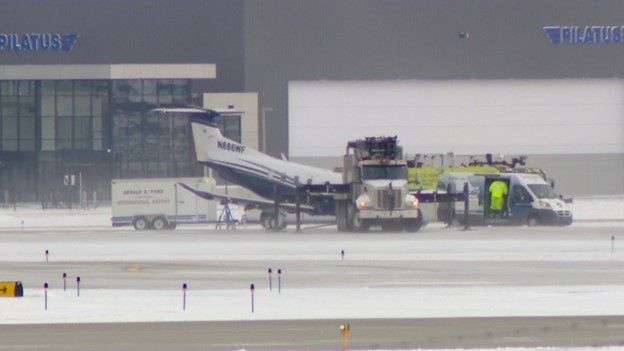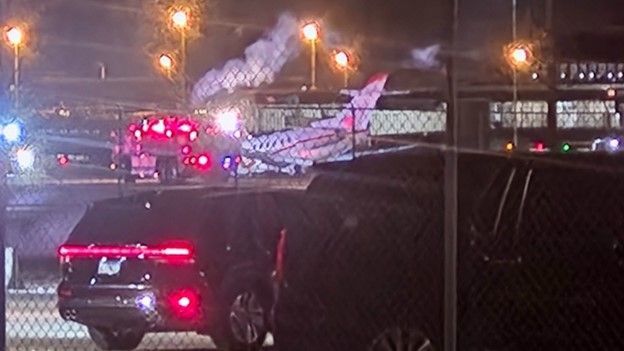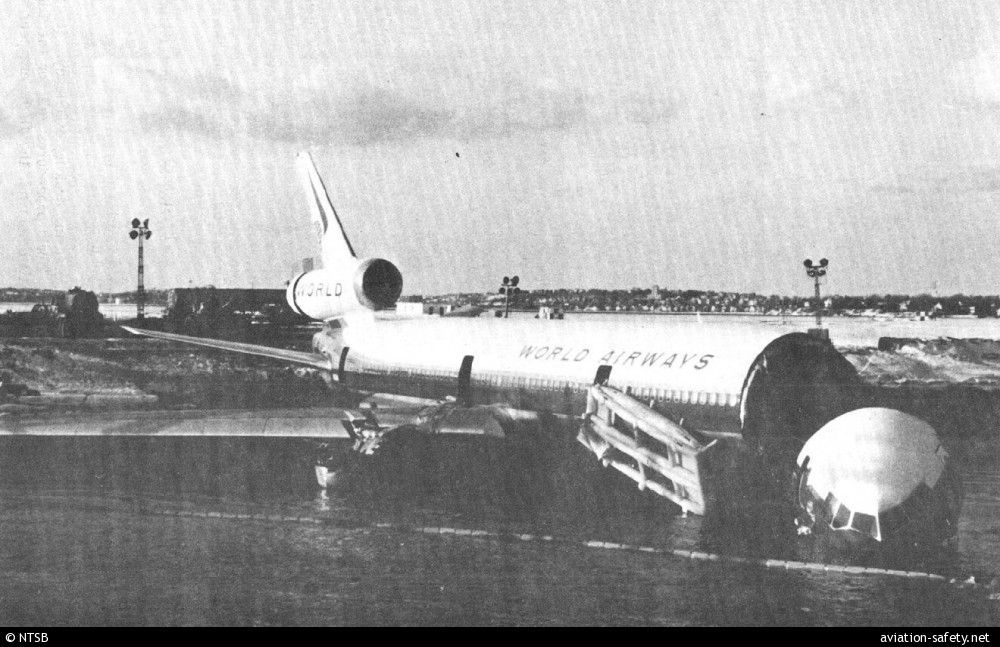ARFF Daily News
Published on:
Thursday the 23rd of January, 2025
These are your stories for today...
Of note, 43 years ago today was the World Airways DC-10-30 overrun at Boston-Logan resulting in two fatalities and 210 survivors. I believe there are a few ARFFWG members still around today that responded to this incident, right Jack?
Be safe out there!
Tom
Small plane makes emergency landing at Ford Airport; no injuries
by: Katie Rosendale
CASCADE TOWNSHIP, Mich. (WOOD) — No one was hurt when a small plane made an emergency landing at the Gerald R. Ford International Airport Wednesday morning, a spokesperson for the airport told News 8.
It happened around 8:10 a.m., according to Public Information Officer Haley Abbas. Ford Airport’s emergency response team responded to an emergency alert for the plane, which had taken off from a public airfield in the area.
Abbas did not specify what caused the plane to make an emergency landing, but she said the plane did not slide off.
The alert was resolved by 9:20 a.m. No injuries were reported.
https://www.woodtv.com/news/kent-county/plane-makes-emergency-landing-at-ford-airport/


Nose gear failure leads to emergency landing at MSP
Ryan Pattee KSTP
A private jet had to make an emergency landing at Minneapolis-St. Paul International Airport (MSP) Monday night while flying from Fort Lauderdale, Florida.
According to a spokesman for MSP, the aircraft emergency occurred around 10:20 p.m. when the pilots of a Hawker 800XP reported a nose gear failure while attempting to reach Flying Cloud Airport in Eden Prairie.
The aircraft was diverted to MSP for an emergency landing, which it made 30 minutes after the initial emergency report.
Due to the nose of the aircraft being stuck in the retracted position, the landing caused sparks and smoke, but all of the plane’s occupants, two pilots, and four passengers were able to exit the aircraft without injuries.
The landing caused one of the airport’s runways to be closed until 3:30 a.m. Tuesday morning, but air operations were not impacted.
https://kstp.com/kstp-news/local-news/nose-gear-failure-leads-to-emergency-landing-at-msp/

NTSB Final Report: Buckeye Dream Machine
Contributing To The Accident Was The Pilot’s Impairment Due To Alcohol And Methamphetamine Use
Location: Bainbridge, Georgia Accident Number: ERA24LA297
Date & Time: July 4, 2024, 19:20 Local Registration: UNREG
Aircraft: Buckeye Dream Machine Aircraft Damage: Destroyed
Defining Event: Controlled flight into terr/obj (CFIT) Injuries: 1 Fatal
Flight Conducted Under: Part 91: General aviation - Personal
Analysis: The pilot of the unregistered powered parachute did not hold a Federal Aviation Administration-issued pilot or medical certificate. Witnesses stated that the pilot was flying over a highway when the powered parachute collided with powerlines and a postimpact fire ensued. Additionally, witness video showed the powered parachute flying low near the highway and powerlines just prior to the accident. The pilot was fatally injured and fire consumed a majority of the powered parachute. No pilot or aircraft maintenance logbooks were recovered.
Toxicological testing results of the pilot’s blood were positive for ethanol and methamphetamine. It is likely that the pilot was impaired by both substances when he failed to avoid the powerlines.
Probable Cause and Findings: The National Transportation Safety Board determines the probable cause(s) of this accident to be -- The non-certificated pilot’s failure to maintain adequate clearance from powerlines while maneuvering at low altitude. Contributing to the accident was the pilot’s impairment due to alcohol and methamphetamine use.
FMI: www.ntsb.gov

Today in History
43 Years ago today: On 23 January 1982 World Airways flight 30, a DC-10-30, overran the runway on landing at Boston-Logan International Airport, USA, killing 2 occupants; 210 survived the accident.
Date: Saturday 23 January 1982
Time: 19:36
Type: McDonnell Douglas DC-10-30CF
Owner/operator: World Airways
Registration: N113WA
MSN: 47821/320
Year of manufacture: 1980
Total airframe hrs: 6327 hours
Engine model: General Electric CF6-50C2
Fatalities: Fatalities: 2 / Occupants: 212
Other fatalities: 0
Aircraft damage: Destroyed, written off
Category: Accident
Location: Boston-Logan International Airport, MA (BOS) - United States of America
Phase: Landing
Nature: Passenger - Scheduled
Departure airport: Newark International Airport, NJ (EWR/KEWR)
Destination airport: Boston-Logan International Airport, MA (BOS/KBOS)
Investigating agency: NTSB
Confidence Rating: Accident investigation report completed and information captured
Narrative:
World Airways flight 30, a DC-10-30, overran the runway on landing at Boston-Logan International Airport, USA, killing 2 occupants; 210 survived the accident.
The DC-10 made a non-precision instrument approach to runway 15R and touched down 2800 feet past the displaced threshold. When the crew sensed that the aircraft couldn't be stopped on the remaining runway, they steered the DC-10 off the side of the runway to avoid the approach light pier, and slid into the shallow water. The nose section separated as the DC-10 came to rest 250 feet past the runway end, 110 feet left of the extended centreline.
PROBABLE CAUSE: "The minimal braking effectiveness on the ice-covered runway; the failure of the Boston-Logan International Airport management to exercise maximum efforts to assess the condition of the runway to assure continued safety of landing operations; the failure of air traffic control to transmit the most recent pilot reports of braking action to the pilot of Flight 30H; and the captain's decision to accept and maintain an excessive airspeed derived from the auto throttle speed control system during the landing approach which caused the aircraft to land about 2,800 feet beyond the runway's displaced threshold.
Contributing to the accident were the inadequacy of the present system of reports to convey reliable braking effectiveness information and the absence of provisions in the Federal Aviation Regulations to require: (1) airport management to measure the slipperiness of the runways using standardised procedures and to use standardised criteria in evaluating and reporting braking effectiveness and in making decisions to close runways. (2) operators to provide flight crews and other personnel with information necessary to correlate braking effectiveness on contaminated runways with aircraft stopping distances, and (3) extended minimum runway lengths for landing on runways which adequately take into consideration the reduction of braking effectiveness due to ice and snow. "


Mailing Address
Subscribe to our newsletter
Contact Us
We will get back to you as soon as possible.
Please try again later.
